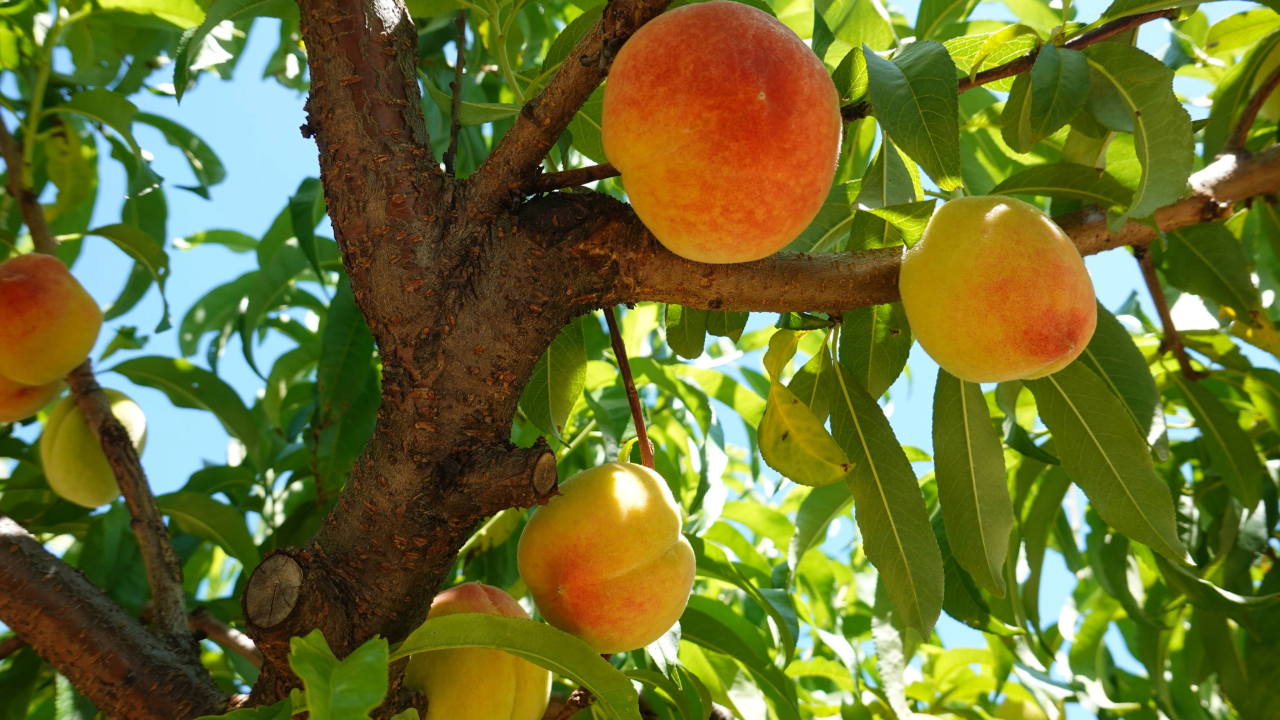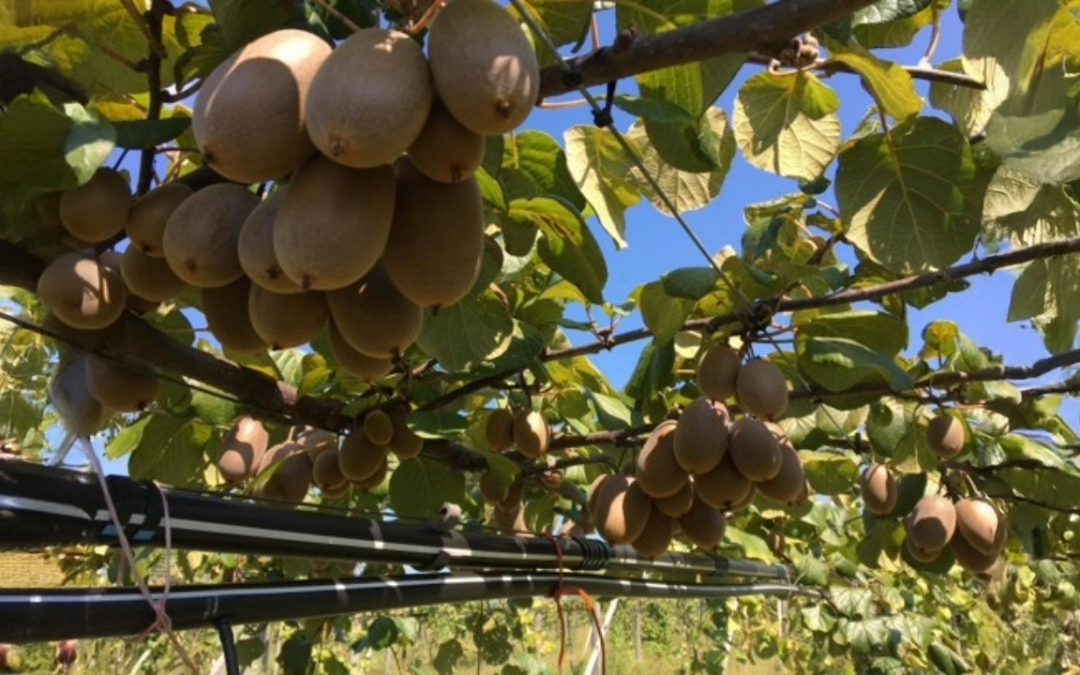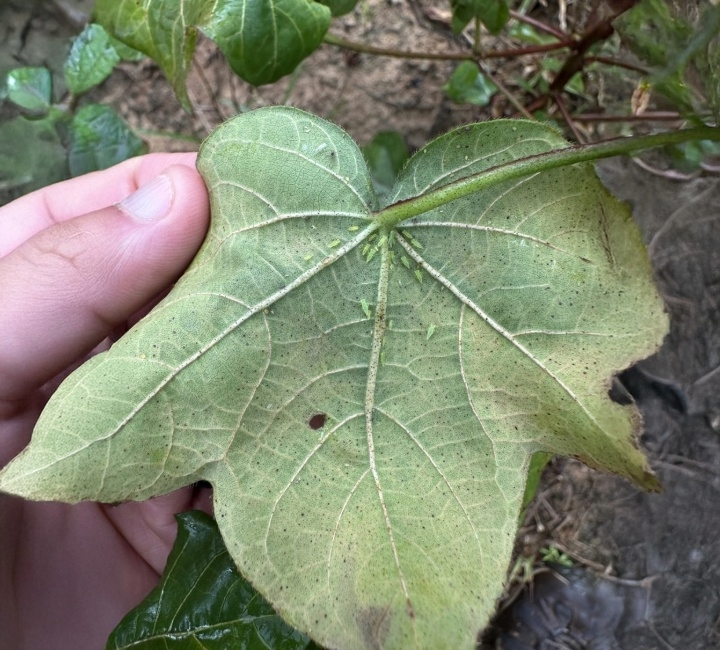Right in the heart of central Alabama, research is conducted throughout the year to find ways to protect one of the state’s most precious commodities—peaches. Among the most damaging diseases affecting stone fruit—especially peaches—is bacterial spot.
As a result, Alabama fruit producers spend approximately $1.2 million dollars every year to control and manage bacterial spot in mature orchards. Bacterial spot is caused by the bacterium Xanthomonas arbicola pv. Pruni. Leaf spots, leaf dropping, fruit lesions, twig cankers and even lesions on the fruit that make it unmarketable.
At the Chilton County Research & Extension Center, carefully executed research projects are conducted by Edgar Vinson, assistant extension professor of horticulture at Auburn University. Although researchers at the Alabama Agricultural Experiment Station are conducting various peach studies, Vinson emphasized that bacterial spot remains a high priority.
“A single peach grower with 100 acres of productive peach trees can expect to spend approximately $85,000 per acre on materials, labor and fuel,” Vinson said. “With high production costs, this study examines treatment methods like copper and biocontrol agents. We strive to provide growers with the information they need to control bacterial spot and protect their crop.”
Vinson’s project explores the leading control methods for bacterial spot in peach production. Currently, the primary leader for control are pesticides that contain copper. Despite years of use, copper-based restricted-use pesticides are now facing resistance in some orchards, according to recent discoveries.
When a disease or bacteria-causing organism becomes resistant to pesticides, the chemical fails to stop the spread. This happens because the organism adapts gradually, allowing resistant strains to survive and grow.
In order to fight resistance, peach producers can utilize antibiotics such as streptomycin, oxytetracycline and kasugamycin. By pairing these products with copper fungicides, growers can better manage resistance problems. However, growers should know that this approach may only be a short-term solution as microbes develop resistance to these over time.
“Copper-containing fungicides are the leading method for bacterial spot control. In order to be effective, these fungicides must cause a level of damage to the leaves that is like the damage caused by the bacterial spot disease,” Vinson said. “One mistake in the application of the fungicide can result in severe defoliation of the peach tree and that leads to reduced yields.”
Even though it has some drawbacks, copper provides battle-tested management for bacterial spot on peaches. However, growers should be aware that it is an aggressive method of control. Copper-based products such as Kocide 2000, Kocide 3000 and Cuprofix Ultra 40 are still available with restricted-use that can only be applied by a certified applicator. Researchers and Alabama Extension specialists recommend following label instructions for precise applications to ensure the best possible results.
With rising resistance and new technologies, peach producers are interested in adopting bio-control methods. As Environmental Protection Agency (EPA) restrictions become more limiting to farmers, they face challenges in managing disease and pests. In response, Alabama Agricultural Experiment Station Research is evaluating the use of phage technology through this project.
“Phage technology involves the use of naturally occurring bacteriophages or viruses that infect bacteria to fight bacterial infections,” said Vinson. “It is part of a growing class of pesticides known as biologicals developed as alternatives to chemical pesticides.”
But how does phage technology work? The bacteriophage viruses infect the bacterial pathogen —in this case Xanthomonas arboricola pv. pruni—replicating themselves inside of the bacteria. Once replicated, the bacteriophages lyse the bacteria, killing them and then spreading throughout the plant destroying the harmful bacterium. Currently, there is not very much information available about the efficacy of phage technology in peaches, especially not in the Southeastern region. According to Vinson’s research thus far, phage applications on infected peaches offer a more delicate approach than copper-based fungicides. As this study progresses, Vinson hopes to determine how effective incorporating phage applications could be for growers.
“If this technology proves effective and is economically feasible, it can help with management of copper resistance,” said Vinson. “And thus, provide disease protection during sensitive peach tree development stages when copper use is discouraged like during bloom.”
As this project continues, Vinson and the Chilton Research and Extension unit team will provide information to peach producers through field days and workshops. With resources available, Alabama peach producers can find ways to tackle bacterial spot management before it is too late.
Since 1948, researchers at the Chilton Research and Extension Center have worked to protect Alabama’s peach production. Through educational resources and science-backed strategies, Auburn University research and Alabama Extension help growers improve operations and optimize efficiency.





